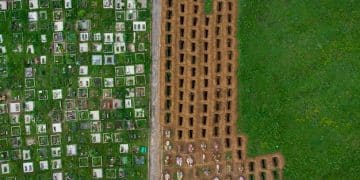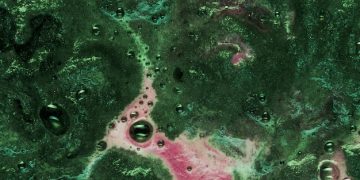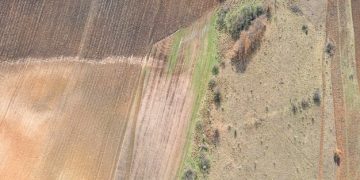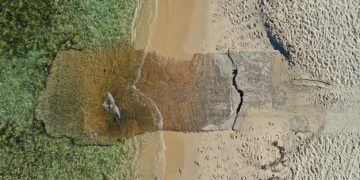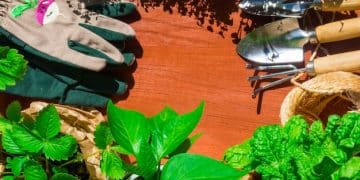Climate Change’s Impact on US Wildlife: Distribution & Abundance Revealed
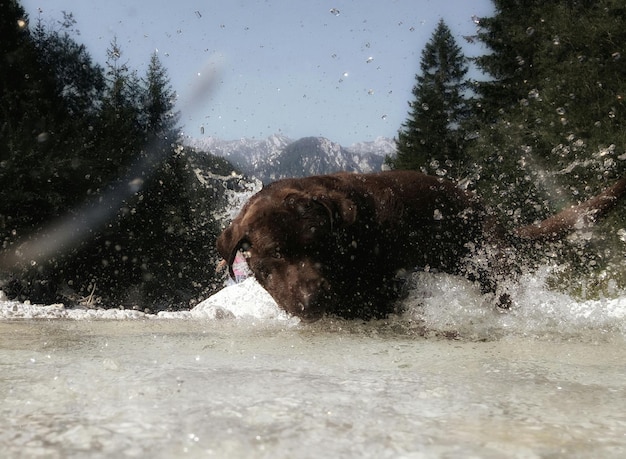
The pervasive shifts in climate profoundly alter wildlife distribution and abundance within the United States by affecting habitats, migratory patterns, food availability, and species interactions, leading to significant ecological restructuring.
Understanding how does climate change affect the distribution and abundance of wildlife species in the US is crucial for conservation efforts and ecological balance. The vast and varied landscapes of the United States support an incredible diversity of life, from the polar bears of Alaska to the alligators of Florida’s Everglades. However, these ecosystems and their inhabitants are increasingly vulnerable to the rapid and unprecedented changes brought about by a warming planet. The shifts are not merely incremental; they represent a fundamental restructuring of natural systems, with far-reaching consequences for biodiversity and human well-being.
The Shifting Geography of Species
Climate change is fundamentally redrawing the biological map of the United States. As temperatures rise and precipitation patterns shift, many species find their historical ranges becoming less hospitable. This forces wildlife to adapt by moving to new areas that offer more suitable conditions, a phenomenon known as range shift or climate-induced migration.
The pace and direction of these shifts are not uniform across all species or regions. Some species, particularly those with higher mobility or broader environmental tolerances, may be able to respond more effectively by expanding their ranges poleward or to higher elevations. However, others, especially those with specialized habitat requirements or limited dispersal abilities, face significant challenges. This often leads to fragmentation of populations and, in some cases, local extinctions.
Northward and Upward Movements
A common trend observed across the US is the northward expansion of species ranges and, in mountainous regions, an upward migration. This response is driven by the search for cooler temperatures and appropriate moisture levels that mimic their historical climates. However, these movements are not without their difficulties, as suitable habitats may not exist or may already be occupied by other species.
- Butterflies and birds are showing significant shifts, with many species expanding their ranges towards the poles.
- Marine species are moving towards colder waters, altering the dynamics of coastal ecosystems.
- Tree lines in mountainous regions are advancing to higher elevations, impacting alpine flora and fauna.
Yet, the ability of species to move is often constrained by geographical barriers, such as mountain ranges, major rivers, or human-developed areas like cities and agricultural fields. These barriers act as filters, preventing species from reaching new, more suitable habitats, or limiting the genetic exchange between populations. This can isolate populations, making them more vulnerable to disease, inbreeding, and other environmental stressors.
The consequences of these shifts extend beyond individual species to entire ecosystems. As new species arrive in areas, they can introduce novel competitive pressures, alter food webs, and even facilitate the spread of diseases. Conversely, the departure of native species can leave ecological voids, impacting pollinators, seed dispersers, and predators, thereby disrupting the delicate balance of existing ecosystems.
Habitat Loss and Degradation
Beyond range shifts, climate change directly contributes to extensive habitat loss and degradation across the US. This is not just about physical destruction but also about fundamental changes to existing habitats that render them unsuitable for the species that depend on them. Rising sea levels, increased frequency and intensity of wildfires, prolonged droughts, and shifts in vegetation zones are key drivers of this transformation.
Coastal ecosystems, such as salt marshes and mangrove forests, are particularly vulnerable to sea-level rise. These vital habitats provide breeding grounds for numerous fish and bird species, protect coastlines from storm surges, and filter pollutants. As sea levels creep upward, these habitats are submerged, and their ability to migrate inland is often blocked by human development, leading to their complete disappearance.
Impacts of Extreme Weather Events
The increasing frequency and intensity of extreme weather events exacerbate habitat degradation. Wildfires, fueled by hotter and drier conditions, incinerate vast tracts of forest and shrubland, displacing wildlife and destroying essential resources. While some ecosystems are adapted to periodic fires, the severity of recent events exceeds historical norms, preventing recovery and altering natural succession patterns.
- Droughts reduce water availability, impacting wetland habitats and leading to increased competition for scarce resources.
- Intense storms can devastate coastal nesting sites and alter aquatic environments.
- Heatwaves stress ecosystems, leading to tree die-offs and reducing food sources for herbivores.
Furthermore, climate-induced changes in vegetation patterns are altering the foundational structure of many habitats. As temperatures rise, existing plant communities may struggle to thrive, while new, more heat-tolerant species may invade. This alters the food and shelter options available to wildlife, particularly specialized feeders and those that depend on specific plant species for survival. The loss of critical habitat components, like particular types of trees for nesting birds or specific wildflowers for pollinators, can have cascading effects throughout the ecosystem.
For example, in the American West, prolonged drought and pest outbreaks, often linked to warmer winters, have led to widespread conifer die-offs. This directly affects species like the spotted owl and various woodpeckers that rely on these trees for nesting and foraging. The interconnectedness of habitats means that a change in one component can reverberate throughout the entire ecological community, creating a complex web of environmental challenges.
Altered Species Interactions and Food Webs
Climate change is not just impacting individual species or habitats; it’s intricately disrupting the delicate interdependencies within ecosystems, fundamentally altering species interactions and food webs. The synchronization of life cycles, known as phenology, is often based on environmental cues like temperature and day length. As these cues change due to climate shifts, the timing of key biological events can become mismatched, with severe consequences.
For instance, the emergence of insect prey may no longer coincide with the nesting period of migratory birds that rely on these insects to feed their young. Similarly, the blooming of specific plants might occur before or after their primary pollinators are active, leading to reduced reproductive success for both the plants and the pollinators. These temporal mismatches, or “phenological asynchronies,” can starve populations, reduce reproductive output, and ultimately lead to declines.
Predator-Prey Dynamics and Disease Spread
The altered timing and distribution of species also affect predator-prey dynamics. If a predator’s prey shifts its range or changes its activity patterns due to climate change, the predator may struggle to find enough food, especially if it cannot adapt its own behavior or diet. This can lead to population declines for both the predator and, paradoxically, for the prey if the predator’s decline leads to an overpopulation of the prey, which then overgrazes its food source.
- Earlier snowmelt can expose prey animals, making them more vulnerable to predators if their camouflage is still adapted to snow.
- Changes in water temperature can impact fish populations, affecting aquatic predators like otters and eagles.
- Increased temperatures can expand the range of disease vectors like mosquitoes and ticks, introducing new pathogens to wildlife populations.
Moreover, climate change can facilitate the spread of diseases among wildlife. Warmer temperatures can expand the geographical range of disease vectors like mosquitoes, ticks, and mites, bringing them into contact with new host species that lack immunity. This can lead to devastating outbreaks, further compromising already stressed wildlife populations. For example, the spread of West Nile virus or Lyme disease, previously limited by colder climates, is now extending into new territories, impacting bird and mammal populations.
The interconnectedness of aquatic food webs is also highly sensitive to temperature changes. Warmer water holds less dissolved oxygen, stressing fish and aquatic invertebrates. Algal blooms, often spurred by warmer temperatures and nutrient runoff, can deplete oxygen further, creating “dead zones” that devastate aquatic life. These changes ripple up the food chain, affecting birds, mammals, and even human communities that rely on these aquatic resources. The intricate balance of these interactions highlights the profound and often unpredictable consequences of a changing climate on the fabric of life.
Increased Competition and Invasion by Non-Native Species
Climate change acts as a significant catalyst for increased competition among native species and facilitates the invasion of non-native species. As habitats become fragmented or less hospitable, species are forced into closer proximity, intensifying competition for dwindling resources like food, water, and shelter. This can put immense pressure on populations, leading to reduced reproductive success and survival rates, particularly for species already struggling to adapt.
Simultaneously, changing climate conditions create new opportunities for non-native, or invasive, species to establish and spread. Warmer temperatures can extend the geographic ranges of these invaders, allowing them to colonize areas previously too cold. These species often have broad environmental tolerances, high reproductive rates, and few natural predators in their new environments, giving them a competitive edge over native flora and fauna.
Disrupting Native Ecosystems
Invasive species pose a significant threat to biodiversity. They can outcompete native species for resources, predate on native wildlife, introduce diseases, and alter habitat structure. The combined stress of climate change and invasive species can overwhelm native ecosystems, leading to significant ecological disruptions and cascading extinctions. For example, invasive plant species can alter fire regimes, making native habitats more prone to severe burns, while invasive aquatic species can dramatically restructure freshwater ecosystems.
- The expansion of invasive plants like cheatgrass can increase wildfire frequency and intensity in the Western US.
- Non-native insects and pathogens, whose spread is aided by warmer temperatures, decimate native tree species.
- Invasive fish and invertebrates outcompete native species for food and habitat in aquatic environments.
The displacement of native species by invasive ones can also lead to a homogenization of ecosystems, reducing overall biodiversity and compromising ecosystem resilience. When a few dominant invasive species replace a complex array of native species, the ecological functions provided by that diverse community—such as pollination, pest control, and nutrient cycling—can be severely diminished. This creates a less stable and more vulnerable ecosystem, less able to withstand future environmental shocks.
The interaction between climate change and invasive species creates a vicious cycle: climate change weakens native ecosystems, making them more susceptible to invasion, while successful invasive species further disrupt those ecosystems, making them even more vulnerable to climate impacts. Addressing this dual threat requires integrated conservation strategies that combine climate adaptation measures with proactive invasive species management, highlighting the complex challenges facing wildlife conservation in a changing world.
Impacts on Reproductive Cycles and Population Dynamics
The intricate life cycles of wildlife species, particularly their reproductive patterns, are highly sensitive to environmental cues. Climate change, by altering these cues such as temperature, rainfall, and the timing of seasons, can significantly disrupt reproductive cycles, ultimately affecting population dynamics and overall species abundance. Even subtle shifts can have profound long-term consequences for a species’ ability to sustain itself.
For many species, successful reproduction depends on a precise alignment of environmental conditions and resource availability. For instance, birds often time their breeding to coincide with the peak abundance of insects or other food sources for their young. If warmer temperatures cause insect populations to peak earlier, but the birds’ nesting behavior remains tied to historical cues, there can be a mismatch, leading to chick starvation and reduced reproductive success.
Reproductive Failures and Declines
Changes in temperature can directly impact the physiological processes of reproduction. For some reptiles and fish, the temperature during egg incubation determines the sex of the offspring. Warmer temperatures can lead to skewed sex ratios, potentially resulting in too few females or males available for future breeding, compromising the long-term viability of the population. Similarly, extreme heat during breeding seasons can lead to reproductive stress, reduced fertility, or even direct mortality of eggs and young.
- Earlier spring thaws can trigger premature breeding in amphibians, exposing eggs and tadpoles to later cold snaps.
- Unseasonable frosts, following early warm spells, can damage crucial food sources for breeding animals.
- Altered oceanic temperatures affect the spawning grounds and success of marine fish populations.
Beyond direct impacts, climate change also affects the availability of essential resources needed for successful breeding and raising young. Droughts can reduce water sources vital for nesting and foraging, while shifts in vegetation can eliminate critical nesting sites or food plants. For migratory species, changes in environmental conditions along their migratory routes can impact their energy reserves upon arrival at breeding grounds, reducing their capacity to reproduce.
The cumulative effect of these disruptions can lead to significant declines in population numbers. If reproductive rates fall below replacement levels for sustained periods, populations will shrink, becoming more vulnerable to other threats like disease, habitat loss, and genetic bottlenecks. This can initiate a downward spiral that is difficult to reverse, ultimately leading to local extirpations or, in severe cases, the possibility of global extinction. Understanding these complex links between climate shifts and reproductive success is paramount for developing effective conservation strategies.
Disease Spread and Wildlife Health
Climate change is intimately linked to shifts in disease prevalence and the overall health of wildlife populations. As global temperatures rise and precipitation patterns change, the geographic ranges and life cycles of pathogens, parasites, and their vectors (like mosquitoes and ticks) are often altered. This can lead to the emergence of diseases in new areas, the increased intensity of existing outbreaks, and a general decline in the resilience of wildlife to cope with infections.
Warmer temperatures, for example, can accelerate the development rates of many disease-causing organisms and their insect vectors. This might mean more generations of mosquitoes in a season, or a faster incubation period for a pathogen within a host, leading to increased transmission rates. Additionally, altered winter temperatures may allow vectors to survive through seasons when they would historically die off, leading to year-round disease risk.
Vulnerability to Novel Pathogens
Climate-induced stress can also weaken the immune systems of wildlife, making them more susceptible to both novel and endemic diseases. Animals facing challenges like habitat loss, food scarcity, or extreme weather events are less able to fight off infections, turning what might have been a minor illness into a significant threat to survival. This is particularly concerning when new pathogens emerge in populations with no prior exposure or natural immunity.
- The expansion of Lyme disease, carried by ticks, into new regions due to warmer winters.
- Increased prevalence of West Nile virus in bird populations as mosquito ranges expand.
- The spread of fungal diseases like White-Nose Syndrome in bats, potentially exacerbated by changing cave microclimates.
Furthermore, climate change can bring previously geographically isolated populations into contact, facilitating the cross-species transmission of pathogens. This can happen as species shift their ranges in search of suitable habitats, encountering new hosts and vectors. The introduction of a “naïve” host population to a pathogen it has never encountered can be devastating, as seen with some amphibian and bat diseases. These intersections create entirely new ecological dynamics where disease becomes a primary driver of population decline.
The interconnectedness of wildlife health, often referred to as “One Health,” underscores that what affects animals can ultimately affect humans. Many zoonotic diseases, which can spill over from animals to humans, are influenced by environmental factors. Thus, monitoring and understanding the impacts of climate change on wildlife disease are not only crucial for biodiversity conservation but also for global public health, highlighting the pervasive and far-reaching consequences of a warming climate on healthy ecosystems.
| Key Aspect | Brief Description |
|---|---|
| 📈 Range Shifts | Species move poleward or to higher elevations seeking suitable climates. |
| 🏜️ Habitat Loss | Rising seas, fires, and droughts destroy crucial wildlife habitats. |
| 🕸️ Food Web Disruption | Mismatched phenologies and altered prey dynamics impact food availability. |
| 🦠 Disease Spread | Warmer temperatures enable pathogens and vectors to expand their range. |
Frequently Asked Questions
▼
Climate change primarily impacts US wildlife through habitat loss and degradation, altered species distributions, changes in food availability, disrupted reproductive cycles, and increased vulnerability to diseases. These effects are interconnected, creating complex challenges for diverse ecosystems across the nation.
▼
All US regions are experiencing impacts, but some are particularly vulnerable. Coastal areas face sea-level rise and increased storm intensity. The arid Southwest endures prolonged droughts. Alaska is warming rapidly, affecting Arctic and sub-Arctic species. Mountainous regions see species shifting to higher elevations, and agricultural zones experience ecosystem shifts impacting pollinators.
▼
While some species possess a natural capacity for adaptation, the current rate of climate change often exceeds their evolutionary pace. Adaptation can occur through genetic changes, behavioral adjustments like shifting migration patterns, or relocating to more suitable habitats. However, human-made barriers and the speed of warming limit these natural adaptive responses, making many species vulnerable.
▼
Extreme weather events, such as heatwaves, prolonged droughts, intense wildfires, and severe storms, directly devastate wildlife populations and their habitats. They can cause mass mortality, destroy food sources, disrupt breeding sites, and push vulnerable species to the brink. These events are becoming more frequent and intense due to climate change.
▼
Conservation efforts include establishing protected areas and wildlife corridors to facilitate species migration, restoring degraded habitats, managing invasive species, and developing science-based adaptation strategies. Efforts also involve reducing greenhouse gas emissions, advocating for sustainable land use, and educating the public to foster greater awareness and support for biodiversity protection.
Conclusion
The profound and multifaceted ways how does climate change affect the distribution and abundance of wildlife species in the US present an urgent call for action. From shifting geographical ranges to disrupted food webs, diminished reproductive success, and the increasing burden of disease, the impacts are pervasive and interconnected. These ecological disruptions not only threaten the rich biodiversity that defines the American landscape but also underscore the intricate web of life that sustains human well-being. Addressing this complex challenge requires a comprehensive approach, combining global efforts to mitigate climate warming with targeted local and regional conservation strategies. Protecting our wildlife means safeguarding our future, ensuring resilient ecosystems for generations to come.
